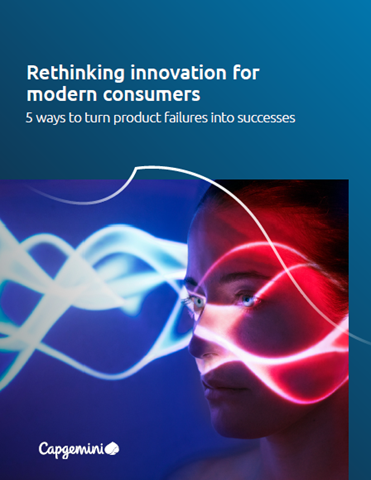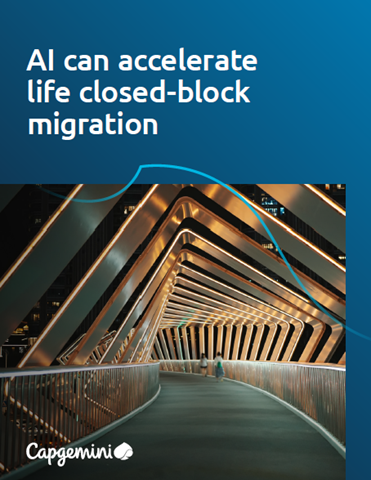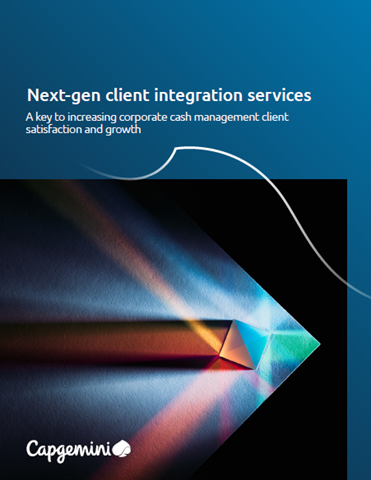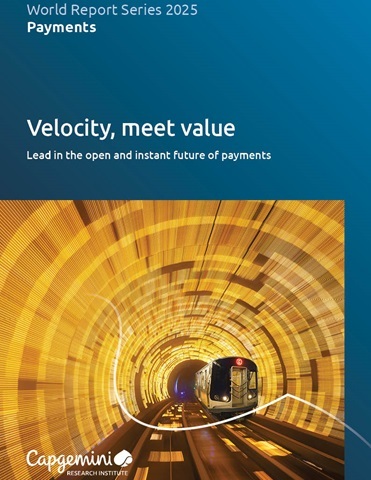A greener way to operational efficiency with digital twin technology
Sponsored by IntelliasMark Gomes of Intellias describes how digital twins can help business leaders make smarter, more sustainable, and future-proof operational decisions
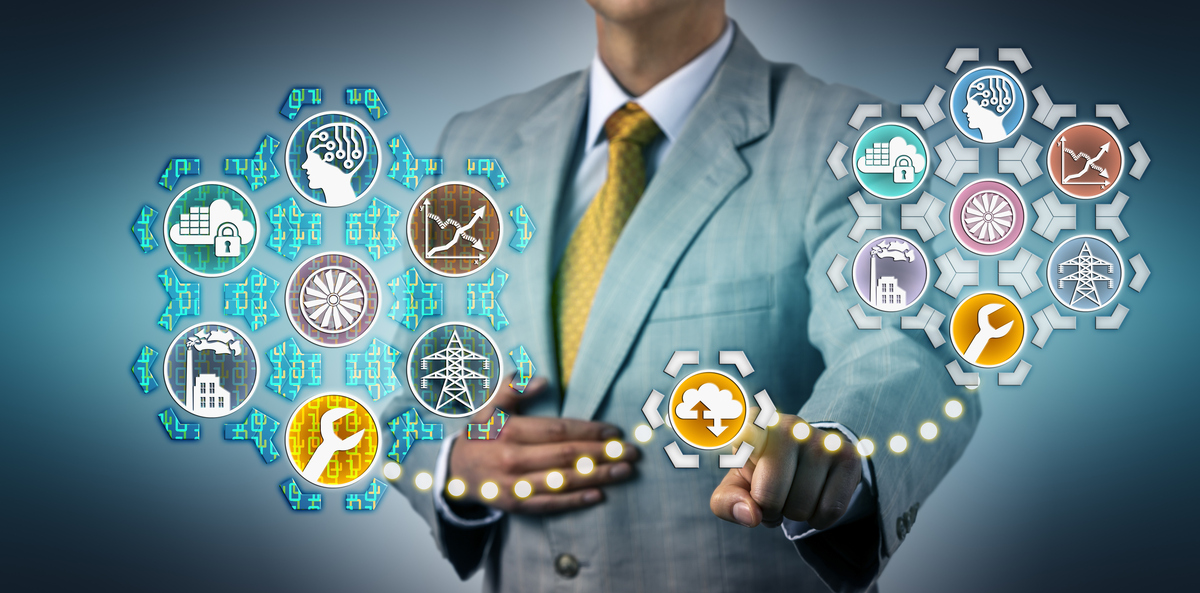
Before launching a human into space, NASA carefully modelled the astronauts’ equipment performance on the ground using some of the most complex simulators available at that time. It was thanks to having and practising with advanced twin systems on the ground that the Apollo-13 crew successfully made it home.
Today, the same degree of simulation is available to almost every business, thanks to digital twin technology. A digital twin is a virtual replica of a physical object, process, or even a person, contextualised with data from the real world. Powered by a combination of sensors, computer vision and AI, digital twins of today can simulate anything from the performance of one conveyor belt to the operations of a national transportation network.
The value of digital twins
Digital twins enable a new level of information collection. Linking previously compartmentalised technology systems and augmenting digital data with insights from the physical world, a digital twin helps better understand the asset’s condition and performance in the past, present and future.
In practice, these advanced data analytics capabilities translate to several promising business use cases.
Real-time data visibility
A recent Toggled survey found that over half of facility managers need help integrating smart technologies with their current infrastructure. As a result, energy usage, asset performance and use of space remain blind spots in facility analytics.
By combining multiple sensing modalities – connected cameras, RFID tags, motion tracking and even ultrasound – digital twins can capture a wide range of data points. With the average cost of a sensor now hovering at £0.30, facility operators can also connect more physical systems to the cloud to obtain high-fidelity data.
New platforms such as Intel SceneScape in turn allow businesses to transform sensor data into spatial awareness by creating 4D, dynamically updated digital models of physical spaces.
Using digital twins, businesses can analyse historical data, track what’s happening at present and make data-driven predictions for the future.
Operational cost optimisation
Energy prices have rocketed by double digits since 2022, with further spikes expected through 2024. Beyond that, facility managers are also pressed by rising costs for services and supplies.
Upward cost trends prompt leaders to seek new opportunities for operational cost optimisation – and digital twins can deliver these. By combining real-time data on utility consumption with occupation trends, digital twin solutions can provide descriptive analytics in utility usage – and, in more advanced cases, help model future usage scenarios.
Warrington Borough in Cheshire used a digital twin to assess local energy consumption. The model integrated data on electricity, heating, cooling, waste heat networks and shared energy across analysed buildings. By analysing the current supply and demand from buildings and other community assets, officials could better evaluate different energy-saving scenarios. For example, they could simulate full decarbonisation for two neighbourhoods of around 500 homes and assess different approaches to implementation.
Increased staff efficiency
Unlike regular analytics, digital twins enable a single pane of data that reflects the actual behaviour of the monitored environment. This allows managers to address various facility challenges such as maintenance, safety or sustainability at faster speeds to avoid disruptions.
Digital twins can replicate the view of standard operating workflows, modelling how staff members and available assets can be best combined to deliver higher performance. With ongoing labour shortages in sectors such as logistics or travel and hospitality, it helps organisations stay agile.
Vancouver International Airport (YVR) in Canada created a situational awareness system, which monitors all terminals and summarises key operational information in real time. The platform immediately notifies ground staff about any data anomalies or potential safety issues. For example, when a connected camera detects a vehicle parked at the kerb for an extended period, it sends a live feed to the operations and security teams to address the issue.
With its digital twin, YVR can also monitor GHG emission levels in real time to better support its efforts to become the world’s first net zero airport by 2030.
Improved sustainability
The UK business sector is responsible for 18.7 per cent of the country’s carbon dioxide emissions, second only to the transportation industry. Heating and equipment energy usage often make up for most of these emissions. It is time for facility managers to not only estimate their carbon footprint but also consider optimisation strategies.
A digital twin helps establish an accurate baseline, based on the real-world data on the building’s environmental impacts. Businesses can capture and monitor data on water usage, heating emissions, waste levels and electricity outputs, among other parameters. The visual twin provides businesses with an accurate and simple-to-use baseline based on IoT sensors, utilities or building data.
The Transport for London (TfL) relies on multi-sensing technology to capture environmental data from all its assets in real time and review it from a user-friendly interface. Sensors already provide accurate visual representation of train tracks and infrastructure, including track conditions and temperature-related impacts, to ensure safe and sustainable working practices. Thanks to digital twins, TfL can remotely perform inventory assessments on emission levels in seconds.
Through AI and real-time analytics, TfL can accurately monitor asset performance, track carbon emission outputs, detect faults and predict outcomes based on the changes in the physical environment.
Accelerated decision-making
Digital twins are excellent forecasting tools due to their ability to process large volumes (and varieties) of historical and real-time data. By having a greater degree of situational awareness, the technology can be effectively deployed for handling life-or-death situations, including responses to natural disasters, technogenic catastrophes or even large-scale health events.
Researchers from Newcastle University, for example, proposed a digital twin concept for multi-agency incident management in a smart city. By aggregating data from smart city infrastructure (road sensors, weather stations, CCTV cameras, mobile devices), the digital twin can provide emergency services with better information for disaster response. For example, it can suggest alternative routes to an emergency site if the main road was flooded. To demonstrate the use-case, the team has developed a successful prototype on the Microsoft Azure platform.
A more advanced digital twin deployment might also incorporate predictive modelling of how an adverse event might unfold and how it would affect regular operations. For example, it can simulate the possible downtime and employee evacuation paths in case of a fire at a factory.
During normal circumstances, the same digital twin can supply real-time data on facility operations, as well as suggest prescriptive scenarios for downtime minimisation (such as though better maintenance scheduling) or resources optimisation (automatic light switch-off in un-occupied facility areas, for example), which also improves revenue generation.
Making digital twins a reality
Digital twins offer transformative benefits across industries. However, the entry barrier for adoption is steep.
In the construction sector, business leaders named three main adoption blockers:
- Cost, effort, and changes needed
- Limited ability to influence the building information model or digital twin parameters
- Lack of data standards among the main blockers to adoption
Indeed, many existing solutions have limited hardware support, forcing adopters to purchase extra expensive equipment (for example, computer vision cameras). The lack of shared interoperability standards also makes it hard to integrate data in different formats (such as AutoCAD data from a business information management system) into the developed digital twin models.
Seeing these challenges unresolved, we at Intellias launched IntelliTwin, a technology-agnostic digital twin platform with multi-modal hardware compatibility. Our goal was to illustrate a real-life business use-case with as many different hardware modalities as possible.
360-degree operational visibility
The IntelliTwin platform is technology-agnostic, meaning it can be integrated with any number of hardware and software modalities. Giving users a choice eliminates interoperability constraints and reduces the technology adoption costs.
For instance, IntelliTwin can be integrated with Intel Real Sense cameras for use-cases requiring high spatial awareness and accuracy rates such as people tracking, facial authentication or 3D object recognition.
Imagine your regular football match. The fans are arriving and crowding the entrances. Digital twin technology, combined with on-site sensors, can help with ticket validation and incident detection. For example, if one of the entry gates gets too crowded, it can direct more on-the-ground personnel to the area. Likewise, such systems can detect public safety incidents – be it a suspicious left object, or a heated exchange on the verge of becoming a fistfight.
In other scenarios, operators can use existing hardware such as CCTV cameras, and augment video feed data with extra data points from motion trackers or ultrasound-based sensors. For example, to estimate the average footfall at the food courts or in the merch stores. By combining different hardware modalities and performing data triangulation, our system can deliver higher accuracy for use-cases such as occupancy rate tracking or asset detection, using our proprietary processing engine. This way users can achieve better balance in terms of operating efficiencies versus adoption costs.
Smarter workforce management
Digital twins can augment the efficiency of your personnel, promoting more informed decision-making and optimised workflow execution. With IntelliTwin, office building administrators can track occupancy rates in real time across the entire building.
By using historical insights, you can create more optimised cleaning schedules, directing the teams towards empty areas or dynamically programming extra cleaning in the conference rooms between the sessions during larger events. Or you could concentrate on new revenue generation opportunities. Operators can sublease partially occupied spaces to generate extra rental income or install new commercial amenities in high-traffic areas and assign available staff to operate these. Pop-up shops and experimental retail spaces are a major industry trend, with many independent brands seeking venues to temporarily house their storefronts.
High-fidelity, real-time analytics removes the volume of manual errors in planning and helps the operating team exercise better judgements. For example, you can optimise the reordering of spare parts, based on the real-time data on assets’ performance and recent maintenance history or ensure necessary staff levels for a rotation of pop-up stores on your premises.
Predictive OPEX savings
Out-of-the-box, IntelliTwin provides capabilities for creating 3D replicas, powered by data from the connected hardware and software systems. Immediately after deployment, users can obtain real-time descriptive analytics and 360-degree monitoring capabilities.
Last year, heatwaves through Europe had left many hotels unprepared. HVAC equipment was falling apart, while the utility bills climbed as travellers sought relief. With a digital twin, a hotel can model its utility bills before the actual record-breaking heat occurs under different occupancy scenarios to make preparations: Service all the equipment, procure extra energy and dynamically adjust rates to cover the extra resource consumption.
To support more advanced use-cases, we’ve working on a dedicated environment for deploying custom AI models. With it, users would be able to explore various predictive analytics scenarios for asset maintenance or utility usage, prescribe real-time optimisations to reduce utility usage or dynamically adjust cleaning schedules for different properties.
Based on the combination of Intel technologies, including SceneScape, OpenVINO and Geti platform, IntelliTwin can be effectively deployed for any industry and a limitless number of use-cases.
With such capabilities available, a hotel chain could dynamically adjust its air conditioning system usage, based on the real-time occupancy rates and expected day-on-day fluctuations in weather.
Leaner, greener, twinner
At Intellias, we have been helping all sorts of mobility, manufacturing and travel firms around the world build excellent software solutions for over 20 years. We believe that the transformative potential of a digital twin lies in its ability to be interconnected. By reducing the barriers to obtaining more data – from other software systems, connected hardware, sensors or even other digital twins – we can promote even more positive changes within individual businesses, across industries and within society at large.
With digital twins, facility managers can better measure their carbon footprint and set optimisation targets to achieve more sustainable operations, while benefiting from easier regulatory reporting and even rebates for steady progress.
The new generation of digital twinners will not only achieve greater operating efficiencies and optimised costs, but also harness greater support from sustainability-oriented consumers, shareholders and stakeholders.
Discover digital twins’ potential for your business and get in touch with Intellias

Mark Gomes, VP of Digital Business at Intellias
With over 20 years of business development experience, Mark is taking Intellias’s European business to the next level of growth by connecting the dots between corporates and technology-driven opportunities.
He has established and led business teams delivering to European core markets and enabled IT solutions across application, infrastructure and BPO service lines. Mark is a consummate professional with sharp business acumen and strong sense of commitment, focus and accountability, and an impressive track record of converting new business opportunities into revenue-generating projects. He is driven to provide a unique business environment and strategic vision to help companies achieve their high-level objectives.
Mark holds a BSc in the Philosophy of Science from the London School of Economics and Political Science.

Business Reporter Team
Related Articles
Most Viewed
Winston House, 3rd Floor, Units 306-309, 2-4 Dollis Park, London, N3 1HF
23-29 Hendon Lane, London, N3 1RT
020 8349 4363
© 2025, Lyonsdown Limited. Business Reporter® is a registered trademark of Lyonsdown Ltd. VAT registration number: 830519543
